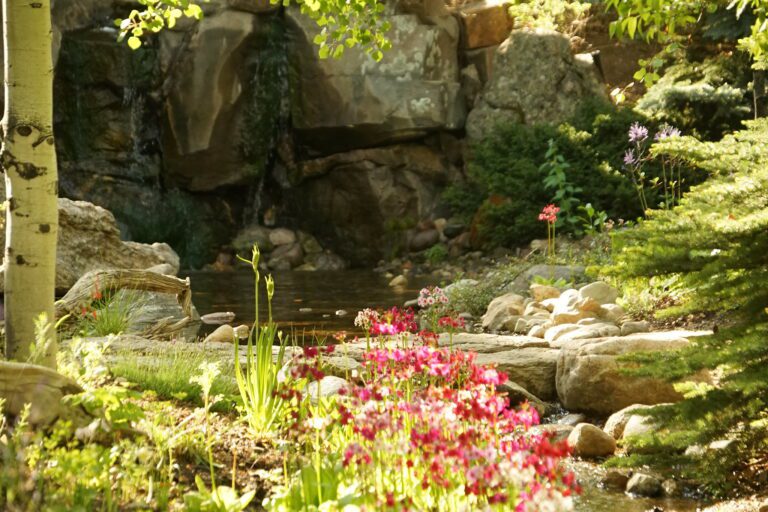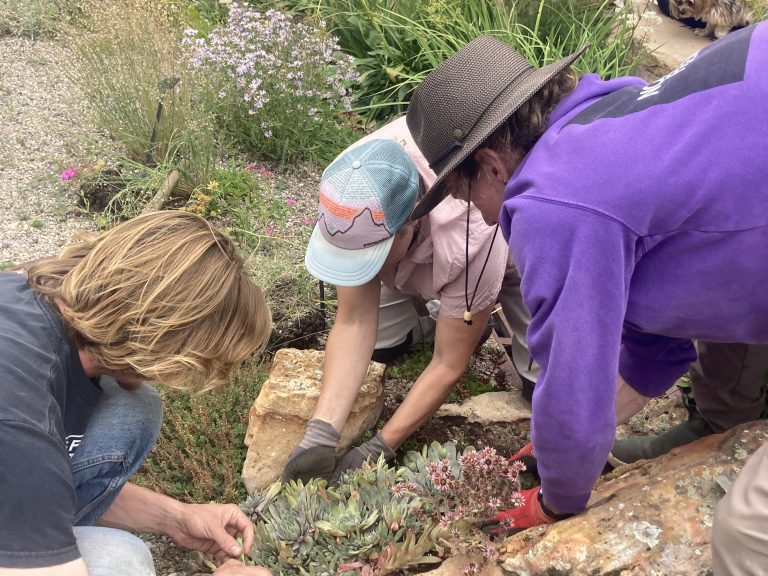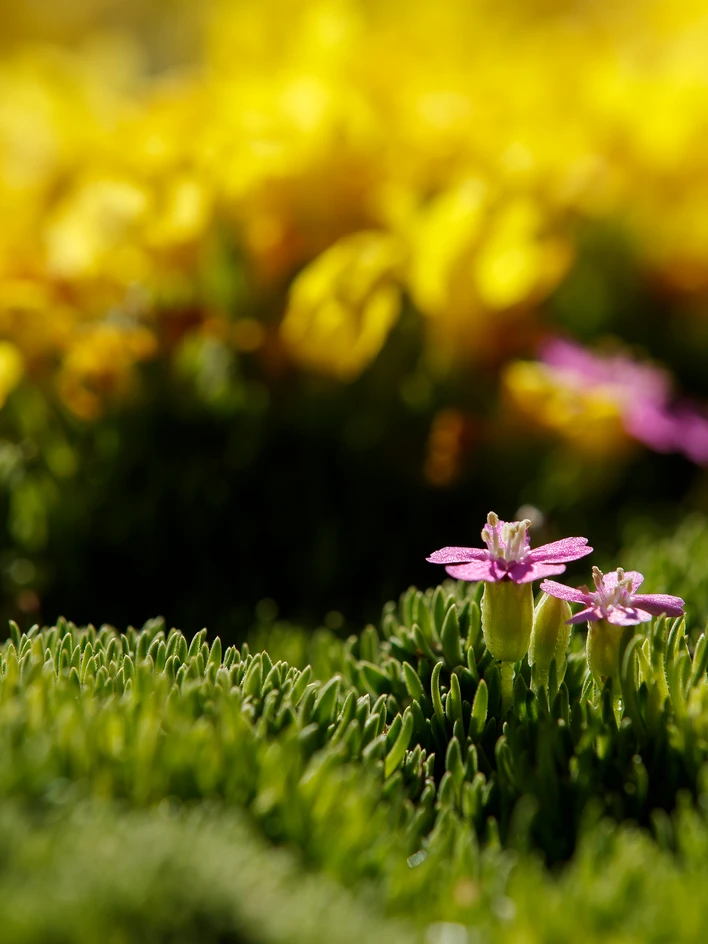The horticultural team at Betty Ford Alpine Gardens wear many hats: botanical experts, volunteer organizers, and garden guest service extraordinaires, among many others. This week, the horticultural team at Betty Ford Alpine Gardens became, too, detectives—solving an original garden mystery: an irrigation investigation.
In front of the iconic schoolhouse gift shop stand two island gardens. Built in 2003 with the cobbled road that stretches from the Gerald R. Ford Amphitheater to the Betty Ford Alpine Gardens Visitor’s Center, for over twenty years these two garden beds have posed something of a mystery to the staff at Betty Ford Alpine Gardens. Though the two gardens were visibly engineered for irrigation, the watering system has been inoperational for the two decades of their existence.
Of course, the warm summer days at Betty Ford Alpine Gardens make watering critical to the survival and flourishing of the gardens. Numerous irrigation systems and watering schedules make these gardens possible, and it is due to the staff’s meticulous watering care that these gardens thrive. The islands, lacking in an operational irrigation system, became a kind of low-water experiment at the Gardens. Over time, “volunteer” plants—plants that were sown and germinated naturally, without the aid of a gardener—had moved into the Gardens. An unlikely garden ensued: chives and nepeta venturing from the Children’s vegetable garden grew alongside cover plants like hens and chicks and sedum.
While these island gardens revealed the beauty of the natural world and the plants’ ability to thrive despite much human intervention and irrigation, the island gardens serve as a centerpiece for the Children’s Garden, and serve a pivotal role as signposts for the entrance to the Gardens. As they are positioned to serve as critically public-facing gardens, the islands provide an opportunity to highlight the work of the Gardens in an intentional way. In short, the horticultural team decided that it was time to get to the bottom of the island irrigation system.
The excavation of the two island beds proved fruitful. The team discovered an unforeseen valve box and, essentially, a modifiable and operational irrigation system. Horticulturist Amanda Goodwin reflected, “the system was twenty years old and no one could ever figure it out—until we did it. We got in there and it took a week. We got it done.”
This revelation—and the repair of a formerly inoperable irrigation system—opens up a world of possibility for new life at the Gardens. The horticultural team salvaged and replanted those volunteer plants—sedum, hens and chicks, and others, outside of the Visitor’s Center, where they frame the open doors, welcoming visitors inside. By doing so, the team has made way for two island gardens that are more botanically relevant to the Children’s Garden and the Schoolhouse.
Now, the question becomes: what plants will benefit from the recuperated irrigation system? In answer to this question, the garden team will do what they do best. Of all the hats they wear, that of “horticulturist” is perhaps the most dear to the Gardens themselves. They’ll respond to the opportunity in the form of a beautiful new centerpiece for Betty Ford Alpine Gardens, coming next summer.





